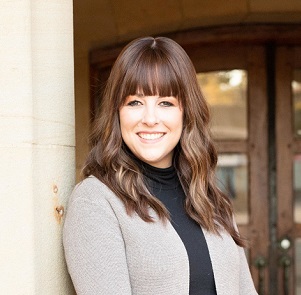Are We There Yet?

Today, if you met Dan — now Daniel — you wouldn’t guess he was a baal teshuvah. His hat is just right, his Yeshivish pronunciation is flawless, and his learning is up there with any other balabos who spent significant time in yeshivah in Eretz Yisrael and kollel in America. There are no traces of evidence that this person only learned alef-beis when he was 19 years old. As one of his local rabbanim exclaimed upon hearing his background, “You’re frum like it’s in your mesorah for generations!”
In fact, when Daniel was suggested to me as a shidduch, I casually asked if he was by any chance a baal teshuvah. I was assured by someone who knew him well from yeshivah that he most definitely was not.
Why do some baalei teshuvah seamlessly blend into the frum world better than others? What factors contribute to or mitigate a baal teshuvah’s success at integration?
Immersion in the community allows baalei teshuvah to experience the language, flavor, unspoken rules, and social norms of Orthodox living like nothing else. When baalei teshuvah become religious in Israel, for example, and spend substantial time learning in a yeshivah or seminary as well, experiencing observant life in the Jewish homeland, they receive a solid foundation in forming their identities as religious people. This “total immersion” experience can aid their transition, especially if they decide to become members of frum communities in chutz l’Aretz. For those baalei teshuvah who did not have the opportunity to learn formally, it may be more challenging to fully acculturate, as they are missing that formative background.
In addition, a baal teshuvah’s motivations for becoming religious may also affect his or her integration into the community. Healthy reasons for becoming frum include a desire to deeply connect to one’s heritage, finding meaning in Judaism, a yearning to lead and raise children with a religious lifestyle, and an impetus to live life according to the truth of the Torah. Unhealthy reasons include an escape from a dysfunctional family situation, a longing to overcome emotional instability through religion, and a belief that the Orthodox community provides a utopia. The healthier a person is coming into Yiddishkeit, the better he or she will be able to deal with the requirements of frum living.
It appears that some baalei teshuvah are somehow able to fit in smoothly while others have not been blessed with all the social skills necessary for mastering the unspoken rules and nuances of frum life. While becoming frum should in no way require a person to become a clone in dress and thought, it is crucial that baalei teshuvah have mentors, both in rabbanim and in friends, who can guide them if they find themselves struggling to navigate the social terrain of being frum.
Another seemingly inborn gift is the ability for some baalei teshuvah to adapt better than others to the language of the frum world. For many, the giveaway is how they make Kiddush. For others, it’s using the wrong phrases at the wrong times or peppering their speech with too many Baruch Hashems. Baalei teshuvah may also overextend language rules, a trend otherwise known as hyper-accommodation. This is perhaps best captured by a joke Sarah Bunin Benor includes in her book, Becoming Frum: How Newcomers Learn the Language and Culture of Orthodox Judaism (Rutgers University Press): “What do baalei teshuvah drink? Ginger Kale!” Often, when a baal teshuvah is immersed in the culture of Orthodox life, linguistic accommodation comes more easily and naturally. For others, however, especially older baalei teshuvah, the struggle can last a lifetime.
As Dr. Benor notes in her book, the concept of hyper-accommodation can also be seen in baalei teshuvah taking on cultural practices with such zeal that they go beyond FFB norms. A baalas teshuvah may love tzniyus so much that her mode of dress exceeds the standard even of the shul rebbetzin; or a baal teshuvah may love davening so much that he makes it his moral duty to shush anyone who whispers in shul. Such choices make it difficult for baalei teshuvah to integrate into the community. And when baalei teshuvah place these unreasonable expectations on their children, they make it harder for their children to integrate with their FFB counterparts.
One way to avoid hyper-accommodation is to maintain a close relationship with a rav who understands the baal teshuvah’s journey and who can help define what is perceived as “normal” behavior and practice. Guidance from role models is essential in navigating the nuances of religious standards of one’s community.
It is important to recognize that a person’s decision to become religious comes in the context of his or her background, strengths, and weaknesses. Ultimately, the goal of becoming frum is to be an eved Hashem, using one’s personality and identity to become a healthy, whole person committed to Torah. Integration means using all of one’s being, past experiences and all, to become a member of the Orthodox community. It is precisely a baal teshuvah’s background, his or her genes and life experiences, that enables him or her to change course and live a G-d centered life. Integration means fitting in like a puzzle piece, not dissolving away in a melting pot. It is recognizing that up until this point, a person was building a gymnasium, but with that foundation now intact, he has decided to build a library.
Integration is a long-distance run, not a sprint; the goal is to maintain one’s commitment to Torah and mitzvos. Taking on every chumrah right away and expecting the excitement to last forever is unrealistic. Following a steady course means recognizing the natural ebbs and waves that come with the seasons of life. Baalei teshuvah need not feel like failures if the initial joy of Judaism wears off. The honeymoon may have simply elapsed, and now the baal teshuvah is in it for the long run. Sprinting leads to burnout; maintaining one’s Yiddishkeit is a lifelong journey with many ups and downs along the way. No one ever really arrives.
The more integrated a baal teshuvah is, through dress, language, and practice, the less obvious it is that he or she is a “new member,” which can be helpful in enabling the baal teshuvah to meld into the community and feel less like an outsider. However, integrating isn’t just about fitting in. It is essential for the functioning of the family in their newly adopted society. Children can appreciate their parents’ unique backgrounds, but ultimately need to feel secure in their environment to appropriately socialize. Furthermore, the chinuch that children of baalei teshuvah receive in school is only as robust as the backing it receives at home. Choosing the right school and making sure parents can support that school’s mission is especially crucial for baalei teshuvah.
Many baalei teshuvah do not want a sign on their back and do not want to always tell their story. But many do have a story to tell and must tell it. Through interactions with baalei teshuvah and learning the stories of what drove them to become observant, the frum world becomes more inspired, more motivated, and more appreciative. Seeing other models of avodas Hashem enriches our own. We see people who gave up so much to choose observant Judaism and we better appreciate what have.
What FFBs need to remember is that baalei teshuvah have much to contribute to the observant community. They bring their talents, education, and experience, and have proven in communities around the world, over the many decades since the baal teshuvah movement started, that they improve our infrastructure. Our schools, our shuls, our restaurants, and our entertainment, among other things, have all benefited from the gifts of baalei teshuvah.
FFBs also need to remember that when we make a chillul Hashem, we hinder everyone’s growth. Many baalei teshuvah grapple with disillusionment. They were brought to Orthodoxy by cream-of-the-crop rabbis and community members, but their new neighbors may cheat the system. And sometimes the very necessity to “fit in” ushers in old struggles baalei teshuvah thought they had left behind. They rejected the materialistic pressures of the suburbs, yet seem to experience the struggle, differently, yet again, as they figure out how to make “normal mishloach manos” or dress their kids and themselves appropriately for Shabbos.
What baalei teshuvah need to remember is that while FFBs are an unselected group, they themselves are a selected group. They fought with blood, sweat, and tears to become the people they are today. The rest of the frum world was born into it. Understanding this can help baalei teshuvah temper their disillusionment when frum people do not meet their expectations. But most importantly, they must remember that everyone experiences struggle, even those who did not turn their lives around to become religious. The common denominator between us all is the striking truth that each day, every Jew, no matter what his background, must fight — and fight hard — to stay strong and choose Yiddishkeit.
Next time you see a typical-looking frum person, whether it’s Daniel, or his wife (me), remember that everyone has a journey. And when you see a frum person who doesn’t look so typical, remember that he has a journey, too. Let’s join together to become more welcoming, more understanding, and more sensitive to each of our journeys as we all strive to achieve the same thing: becoming servants of Hashem.
Originally featured in Mishpacha, Issue 736. Alexandra Fleksher is an educator, a published writer on Jewish contemporary issues, and an active member of her Jewish community in Cleveland, Ohio.
Oops! We could not locate your form.













